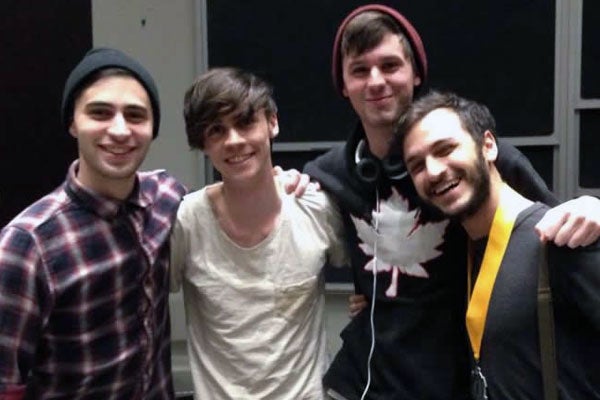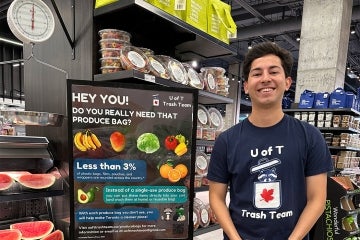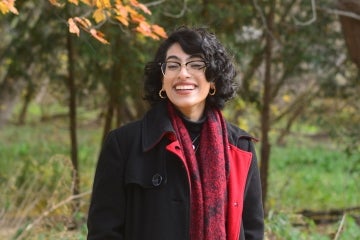
The social benefit of 500 hackers
Published: February 5, 2015
In the film Blackhat, actor Chris Hemsworth plays an imprisoned computer hacker who can secure his own release if he helps the FBI stop the code he once helped create.
But unlike Hollywood films, some hackers use various coding languages, creatively, for social innovation. Hackathons bring hundreds of computer programmers together to learn and build new skills. The results of these “hacks” can solve daily problems or have a wide social impact.
“It’s amazing to see the programming challenges students overcome by working collaboratively,” said computer science student Aashni Shah, an executive organizer of U of T Hacks. “By developing software in teams, and especially in large groups at hackathons, you notice things you might have otherwise missed – like that semicolon you need for your program to work.”
University of Toronto computer science students organized U of T Hacks, a 36-hour hackathon to challenge programmers from U of T and other universities, colleges and high schools. Now in its second year, U of T Hacks accepted 500 students from more than 1,350 applications, making it the largest hackathon for U of T.
“Many companies find it a great alternative to the standard career fair as they get to meet and interact with students in a more meaningful way,” said Shah.
Intel, U of T Hacks’ title sponsor, provided the option of Intel Edison boards, allowing for the quick prototyping of connected computing devices. IBM Bluemix, Twilio and Mashape were just a few of the other computing services students were given access to for their hack.
 U of T computer science students Arvin Rezvanpour and Winston Yeung formed a team with two students from the University of Waterloo. The team won the top prize in the software category for Medmember.
U of T computer science students Arvin Rezvanpour and Winston Yeung formed a team with two students from the University of Waterloo. The team won the top prize in the software category for Medmember.
(Pictured from left to right: Dustin Woo and Jasmine Chan, University of Waterloo, with U of T's Yeung and Rezvanpour)
“Medmember is a web portal to send medication reminders. Caregivers input the time, message, medication and dose,” said Yeung.
“The senior will receive a phone call or text message reminder. The system will also read messages for phone call notifications and the senior can press one to call the caregiver back.”
In the hardware category, U of T computer science students and bandmates, Nick Frosst, Jonathon Kereliuk, Michael Kozakov and Jacob Tsafatinos, created Pulse, a smartwatch application with haptic feedback for syncing musicians, athletes and dancers and helping the hearing impaired.
“Pulse lets the user tap the tempo. The smartwatch then vibrates to that tempo, helping the musicians play in time without having to use headphones or any other sound equipment,” said Kozakov. “We soon realized it could have other uses in sports and arts, such as rowing and synchronized dance. Also, the hearing impaired who cannot rely on a traditional sound metronome could find Pulse a useful alternative.”
During the hackathon students took part in other events, including the Red Bull Paper Wings Challenge, a paper airplane contest, where winners have the chance to win a trip to the world finale in Salzburg, Austria, and mentorship sessions to gain one-on-one feedback from industry mentors.
“Hackathons present complex, challenging problems to students. They love the collective experience of being able to test their skills and learn from each other and the industry mentors – even if it means hours of programming and getting little sleep,” said Diane Horton, senior lecturer in the department of computer science.
U of T Hacks has partnered with Global Hackathon Seoul, a student-initiated movement to bring together 2,000 students from more than 150 countries to Seoul, Korea, for a hackathon in July, 2015.
Nina Haikara is a writer with the department of computer science.



